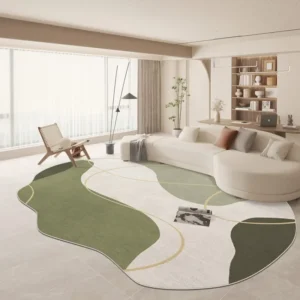With the rise of remote work, many of us find ourselves in need of a dedicated home office space. However, traditional office setups can lead to significant environmental impact. Have you ever considered that your workspace can be both functional and eco-friendly? In this article, we’ll share sustainable home office design tips that will help you create a workspace that not only enhances productivity but also reduces your carbon footprint.
By the end of this guide, you will understand how to integrate sustainable materials, furniture, and practices into your home office. You’ll also learn how to make mindful purchasing decisions without compromising on style or efficiency.
Let’s delve into sustainable design principles, eco-friendly materials, and practical tips to transform your workspace into an eco-conscious haven.
1. Understanding Sustainable Design Principles
Sustainable design is about more than just using green materials; it’s about creating a space that minimizes its environmental impact and promotes health and well-being. Here are some key principles:
- Eco-Friendliness: Use materials that are renewable, recycled, or reduced in their environmental impact.
- Energy Efficiency: Implement design strategies that reduce energy consumption.
- Indoor Air Quality: Focus on non-toxic materials that improve air quality.
- Reuse and Repurpose: Incorporate items that might otherwise go to waste.
1.1 Why Sustainability Matters
According to a study by the United Nations Environment Programme, buildings account for approximately 40% of global energy consumption. By designing your workspace sustainably, you contribute to a healthier planet while also often enhancing your own well-being.
2. Choosing Eco-Friendly Materials
2.1 Sustainable Furniture Options
Furniture can be a significant contributor to your workspace’s environmental impact. Opt for:
- Reclaimed Wood: This furniture is made from salvaged materials, reducing deforestation.
- Bamboo: A fast-growing, renewable resource that can be used for desks and chairs.
- Biodegradable Materials: Look for options like cork, which can decompose at the end of their life cycle.
2.2 Low-VOC Paints
When it comes to choosing paint for your home office, pick low-VOC (volatile organic compounds) options. These paints emit fewer chemicals and have a smaller impact on indoor air quality.
3. Designing for Energy Efficiency
3.1 Optimize Natural Light
Utilize windows strategically. Natural light reduces reliance on artificial lighting and has been shown to improve mood and productivity. Consider placing your desk near a window and using light curtains for privacy while still allowing sunlight in.
3.2 Energy-Efficient Lighting
If you need additional lighting, opt for LED bulbs, which use up to 75% less energy than incandescent bulbs. Dimmers can also help control energy use and set the mood.
4. Adding Touches of Nature
4.1 Incorporating Plants
Bringing plants into your workspace can significantly enhance air quality.
Some great options include:
- Snake Plants: Known for their air-purifying properties.
- Pothos: Great for smaller spaces, easy to care for.
- Peace Lilies: Beautiful flowers and excellent air filterers.
4.2 Biophilic Design Elements
Incorporate natural materials and shapes that mimic nature. Use wood, stone, and other organic materials in decor and furniture, creating a calming environment.
5. Implementing Mindful Technology
5.1 Smart devices
Consider using smart home technology that can monitor and optimize your energy use. Smart outlets, thermostats, and lighting can adjust according to your patterns, reducing waste.
5.2 Reducing Electronic Waste
Invest in high-quality electronics that can last longer, and establish a recycling strategy for old devices to minimize electronic waste. Many manufacturers offer take-back programs for old technology.
6. Creating a Functional Workspace Layout
6.1 Ergonomics and Sustainability
Choose ergonomic furniture that not only supports your posture but is also sustainable. Look for chairs and desks that are designed to last and made from eco-friendly materials.
6.2 Clutter-Free Environment
Keep your workspace organized and free of clutter, which can help minimize stress and improve focus. Implement storage solutions like repurposed boxes or bins made from recycled materials.
FAQ Section
What materials are best for a sustainable home office?
Opt for reclaimed wood, bamboo, and low-VOC paints. Consider furniture made from recycled materials as well.
How can I improve air quality in my home office?
Incorporate indoor plants, utilize non-toxic materials, and ensure proper ventilation to improve air quality.
What are some energy-efficient lighting options?
LED bulbs are the most energy-efficient option, using less power and lasting longer than traditional incandescent bulbs.
Can I turn an existing space into a sustainable home office?
Yes, you can update existing furniture with eco-friendly materials and optimize lighting and air quality.
What role does technology play in a sustainable office?
Smart technology can monitor energy use, while minimizing electronic waste through responsible recycling.
Content Disclaimer
The information provided in this article is for educational purposes only. It is not intended as professional advice. Always consult with a qualified expert for specific recommendations and guidance.
Categories
- Accent Walls & Ceilings (33)
- Art Curation & Gallery (48)
- Bedding Style Trends (46)
- Bedroom Makeover (53)
- Bohemian & Eclectic Styles (33)
- DIY & Budget-Friendly Decor (32)
- Eco-Friendly Design (32)
- Furniture Care (54)
- Home Decor & Design Ideas (115)
- Home Wellness Spaces (32)
- Integrated Outdoor Living (32)
- Kids and Nursery Decor (33)
- Living Room Decor (53)
- Minimalist & Japandi Style (35)
- Mix & Match Techniques (51)
- Modern & Contemporary Design (32)
- Rug Sizing & Placement (52)
- Seasonal Home Decor (55)
- Small Space Solutions (37)
- Wall Art & Painting Tips (55)
Recent Comments
Archives
Product Gallery
-
 Large Area Green Rugs for Bedroom Nordic Living Room Decoration Shaped Carpet Irregular Plush Lounge Rug Home Thick Washable Mat
Rated 5.00 out of 5$57.14 – $360.30Price range: $57.14 through $360.30
Large Area Green Rugs for Bedroom Nordic Living Room Decoration Shaped Carpet Irregular Plush Lounge Rug Home Thick Washable Mat
Rated 5.00 out of 5$57.14 – $360.30Price range: $57.14 through $360.30 -
 Nordic Style Rugs for Bedroom Morandi Living Room Decoration Carpet Large Area Geometry Lounge Rug Home Cloakroom Non-slip Mat
Rated 5.00 out of 5$41.04 – $621.62Price range: $41.04 through $621.62
Nordic Style Rugs for Bedroom Morandi Living Room Decoration Carpet Large Area Geometry Lounge Rug Home Cloakroom Non-slip Mat
Rated 5.00 out of 5$41.04 – $621.62Price range: $41.04 through $621.62 -
 Irregular Shapes Living Room Decoration Carpet Modern Style Rugs for Bedroom Home Thicken Plush Rug Fluffy Soft Lounge Floor Mat
Rated 4.75 out of 5$58.08 – $361.30Price range: $58.08 through $361.30
Irregular Shapes Living Room Decoration Carpet Modern Style Rugs for Bedroom Home Thicken Plush Rug Fluffy Soft Lounge Floor Mat
Rated 4.75 out of 5$58.08 – $361.30Price range: $58.08 through $361.30





